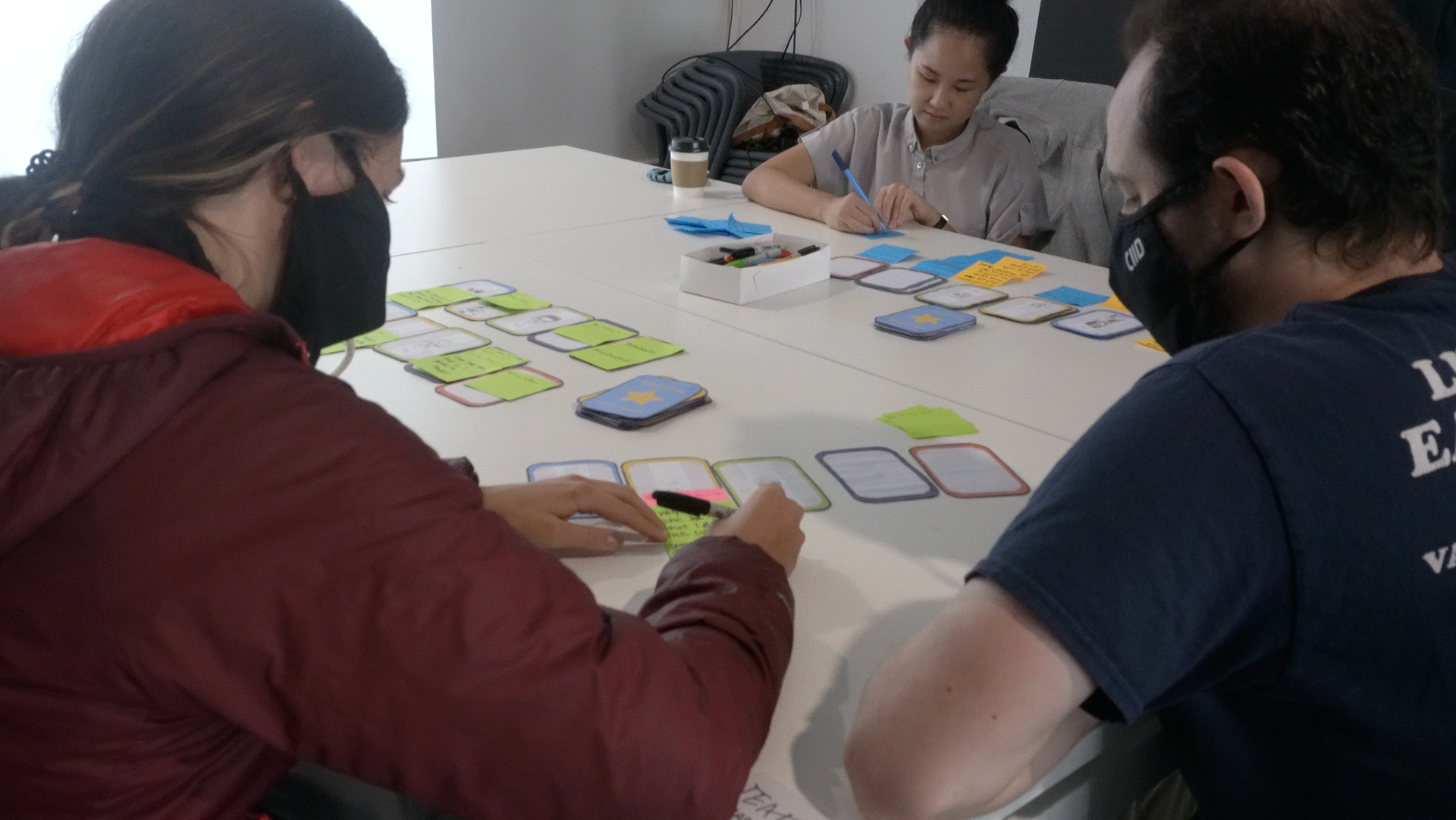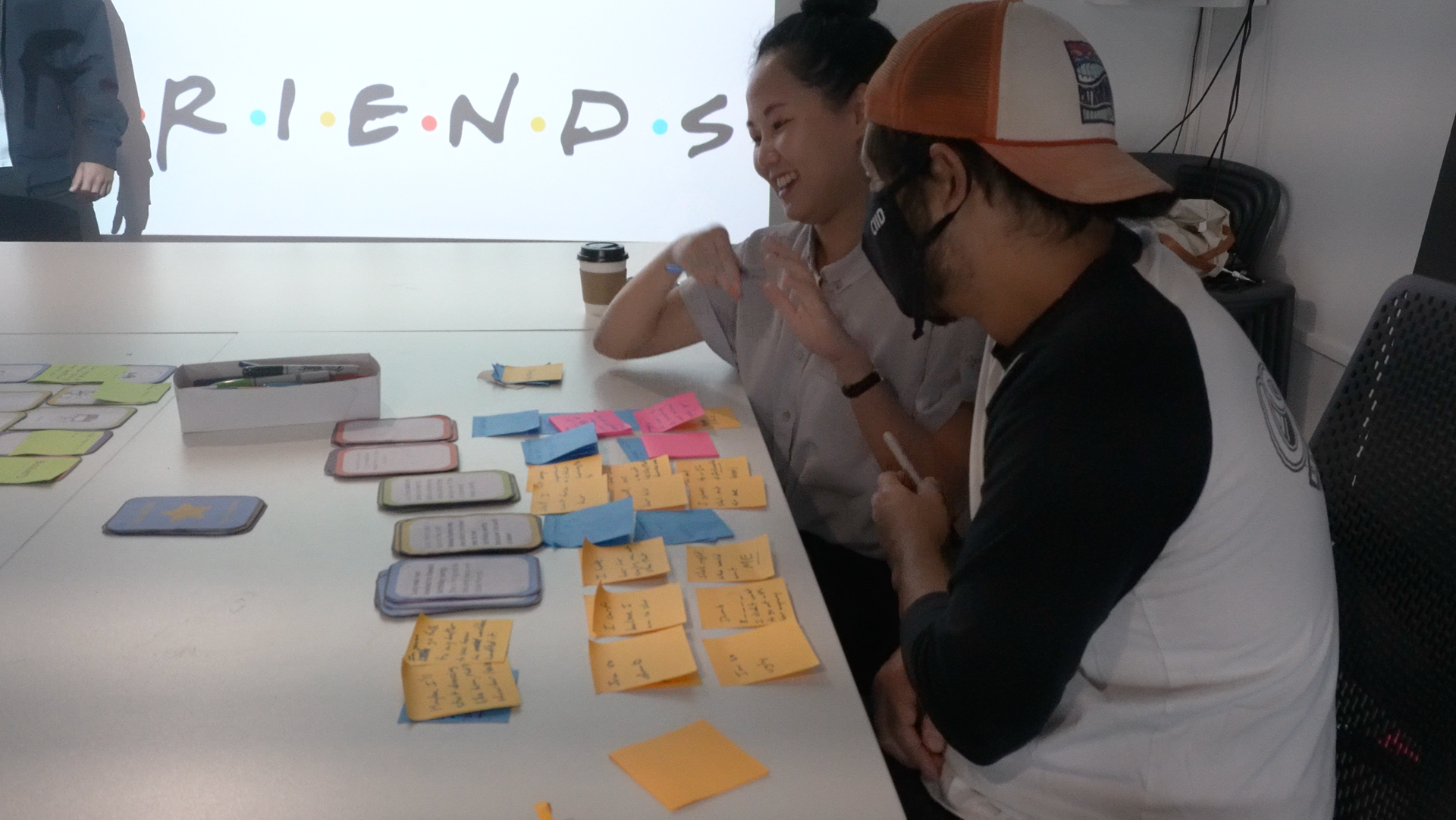SUMMARY
Challenge
When 13-year-olds start middle school, they face challenges with identity and peer acceptance, often leading to self-criticism and negative self-talk.
Opportunity
How might we make mental health tools more accessible, enabling 13-year-olds to reframe situations and develop a more positive mindset?
Intervention
A service designed to help middle schools support 13-year-old students in reframing their thoughts more positively through a combination of workshops and a companion app. Inspired by Cognitive Behavioral Therapy (CBT), the service teaches students to recognize and challenge negative thinking patterns, helping them understand how their thoughts affect their emotions and behavior.
*More on the process below.
Simplified CBT
Concept image
how it works
Concept video
PROCESS
statement of intent
The project's initial focus was to explore how children can build resilience from an early age.
Research, Synthesis & key insight
The process started with desk research and in-depth interviews with educators, school founders, child psychologists, design experts, parents, and children.
For synthesis, I applied a service design framework to organize the diverse interview insights, identifying key patterns. The central finding was that when 13-year-olds transition to middle school, they face challenges with identity and peer acceptance. At this age, they tend to be more self-critical but often lack the tools to interpret situations in a balanced way.
Framework 1
Framework 2
pivot #1
The initial intervention targeted children ages 4 to 6. However, after careful consideration of the insights gathered, I realized that focusing on 13-year-olds would be more effective, as they are cognitively better equipped to interpret situations. This shift marked the first significant change in the project's direction.
opportunity area
How might we create a safe space for 13-year-olds to internalize and positively reframe situations, seeing them as challenges rather than failures?
I moved into the prototyping phase with this question at the core, testing assumptions based on the following premises:
1) 13-year-olds prefer verbal communication.
2) They want to initiate interactions.
3) The phrasing must be carefully considered to avoid overwhelming them.
4) 13-year-olds find moments throughout their day to reflect.
Prototyping & learnings
I created two prototypes to test these assumptions. The first was a lo-fi bot on WhatsApp, which helped me discover that verbal communication requires more trust, while written communication gives users time to reflect. It also showed that 13-year-olds preferred to initiate the interaction rather than have the bot lead, and that asking open-ended questions encouraged thoughtful responses, whereas assumptions did not.
The second prototype involved a series of co-creation activities with child psychologists. Their feedback confirmed that written communication supports better reflection and highlighted a key insight: even adults struggle to find moments in their day for reflection, so expecting a 13-year-old to do so might be unrealistic.
Lo-fi bot
Co-creation activities
pivot #2
After careful consideration, both the insight and opportunity evolved. The findings revealed that 13-year-olds needed a tool, not just a space, to help them navigate challenges.
The updated key insight: When 13-year-olds enter middle school, they face struggles with identity and peer acceptance. At this age, they are more self-critical but lack the tools to interpret situations in a healthy and constructive way.
UPDATED OPPORTUNITY AREA
How might we make mental health tools more accessible, enabling 13-year-olds to reframe situations and develop a more positive mindset?
Concept
description
A program helps 13-year-old students develop the ability to see situations in a more positive light through engaging workshops and a supportive app.
13-year-old reframing fictional situation
Approach
I adapted a version of the CBT model to help 13-year-olds become more aware of how controlling their thoughts can improve their emotional well-being. This approach encourages users to generate alternative perspectives and challenge negative thinking patterns.
The concept combines a hands-on workshop with an app to reinforce these skills.
High fidelity cards
App
WORKSHOP iterations & learnings
I conducted two iterations of the workshop: one with adults and another with 13-year-olds. The decision to use a workshop format was based on leveraging the school's system to support the concept effectively.
Key insights from the adult iteration were:
1) Reflecting on emotions prompted deeper understanding of how thoughts impact moods.
2) Even adults struggled to recognize and label their emotions.
Based on these findings, I designed an emotional wheel to help 13-year-olds in the second iteration.
For the 13-year-olds, the learnings were:
1) They preferred working in pairs, as it sparked new ideas and perspectives.
2) They enjoyed fictional scenarios because they could relate to the characters without it feeling too personal.
3) The workshop was too long and needed to be more concise.


Workshop iteration 1




Workshop iteration 2
app & learnings
I designed the app as an extension of the workshop, following the same sequence as the workshop cards. A key consideration was ensuring users spent 2 to 5 minutes on the app, aligning with the standard duration for mental health apps.
Testing with 13-year-olds revealed several areas for improvement:
1) The emojis needed to be organized in a less overwhelming way.
2) Emotions should be clearly labeled to avoid confusion.
3) The app should encourage users to reflect at the end of the CBT process.
All of these adjustments are highlighted in the concept video.
Labeling emotion
Interpreting emotion
value proposition
[RE]frame helps 13-year-olds reframe negative situations more positively by providing them with a practical tool for personal growth.
PURPOSE
The intent of [RE]frame is to prioritize mental health and well-being from an early age. Equipping young people with strategies and tools to cope with issues like anxiety and depression should be a fundamental part of the educational system.
Special appreciation for all who contributed to making the project better.
Tools used: Service Design frameworks, Figma, Illustrator, Premiere Pro, Miro, Sony Alpha6400 & Miro